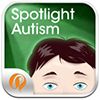Article
Top medical apps of 2013
Mobile technology puts health-care data in palm of hand
The use of mobile technology to deliver health-care services and information skyrocketed in 2012.
Some 44 million health apps will have been downloaded by the end of this year (predicted to reach 142 million downloads by 2016),1 and consumers are now spending $700 million per year on these apps.2
There are more than 10,000 health apps in the iTunes app store,3 the number of American using smartphones for health information grew from 61 million to 75 million in 2012,2 and 88% of physicians would like patients to monitor their health at home.3
Among the medical and health apps that patients are likely to use in 2013:
MediSafe Project (Free)
A cloud-synced pillbox app that not only reminds patients when it’s time to take medications, but also sends their family, friends, and caretakers alerts if they miss a dose. Compatible with the FDA’s drug database, generic and brand name medications “autocomplete” as users enter them-automatically recording the correct pharmaceutical name, manufacturer, and medication strength. Or, patients can use their smartphone cameras to snap the FDA’s universal National Drug Code (NDC) number, found on all original pharmaceutical packaging, to enter a medication.
WebMD Pain Coach (Free)
Watch the instructional video. Helps people with chronic pain conditions make daily health and wellness choices, so they can manage their pain more effectively. From back pain to migraines, the app lets patients record daily pain levels, export their pain history to PDF format, and e-mail it to their physicians. Patients can also select physician-approved goals from five lifestyle categories related to pain condition(s): Food, Rest, Exercise, Mood, and Treatments, view “bite-sized” tips matched with goals and organized into the same five lifestyle categories, and have access to hundreds of articles, videos, slide shows, and quizzes on pain management related to patients’ condition(s).
Emotion Select ($8.99)
Part of the ‘Spotlight Autism’ app series, Emotion Select helps children with autism spectrum disorder or those suffering other social delays practice learning and identifying emotions. After reviewing illustrations for joy, sadness, anger, surprise, and fear, children are given the chance to anticipate and apply them in “real-life” social situations. Includes statistical analysis for parents, teachers, and therapists to track specific strengths and weaknesses of children’s learning progression.
Emergency Kit (Free, Windows Phone)

An easy way to aggregate patients’ most critical information-and could save a life in a medical emergency. Emergency technicians will be able to view vital stats, including blood type, allergies, medications, and emergency contacts, within the app. It can also turn a phone into an SOS light beacon, send out an emergency text message or e-mail with a patient’s GPS coordinates, or look up how to treat different injuries.
References
1. 44M mobile health apps will be downloaded in 2012, report predicts. iHealthBeat. http://www.ihealthbeat.org/articles/2011/12/1/44m-mobile-health-apps-will-be-downloaded-in-2012-report-predicts.aspx. Accessed Feb. 21, 2013.
2. Pennic F. 45 mind blowing digital health statistics and trends. Healthcare IT News. http://www.healthcareitnews.com/blog/45-mind-blowing-digital-health-statistics-and-trends. Accessed Feb. 21, 2013.
3. Conti K. How the explosion of mobile health is changing healthcare. MedNEWS Blog. http://www.mednet-tech.com/newsletter/mobile-marketing/how-the-explosion-of-mobile-health-is-changing-healthcare. Accessed Feb. 21, 2013.
Newsletter
Don’t miss out—get Ophthalmology Times updates on the latest clinical advancements and expert interviews, straight to your inbox.






